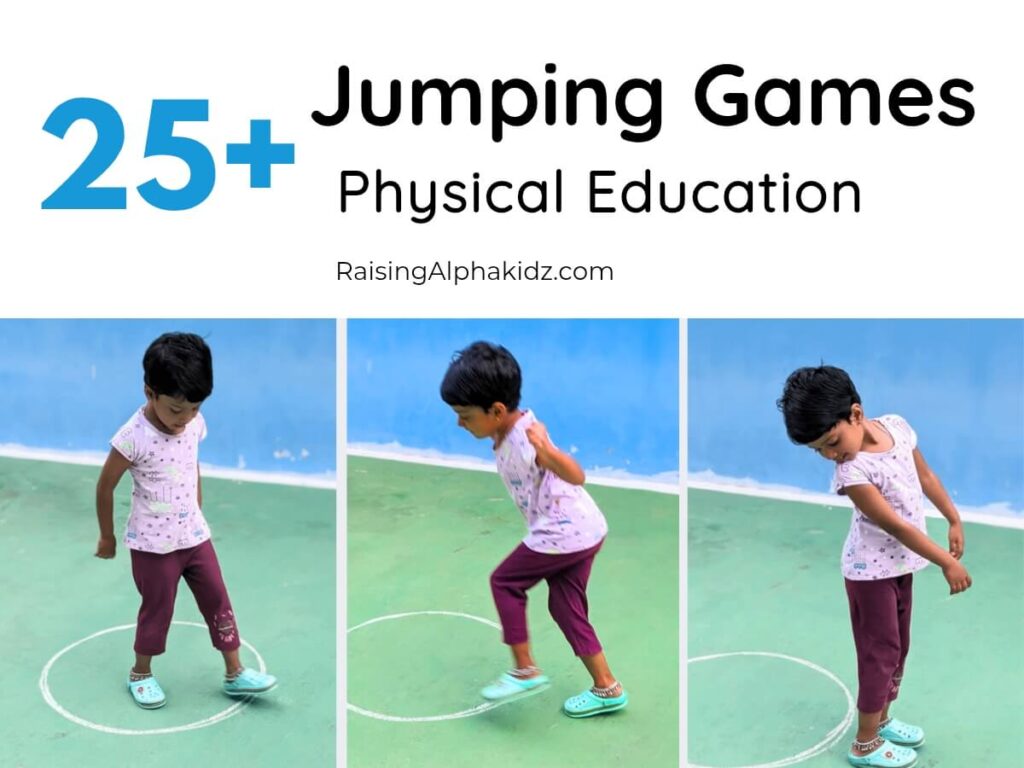No-equipment Jumping Games For kindergarten Kids: Single Player PE Games
Two decades ago, childhood looked very different. Afternoons were filled with laughter and energy as siblings and neighborhood friends gathered outdoors to play. Jumping Games like hopscotch, jump rope, the floor is lava and countless other jumping activities weren’t just pastimes—they were a way of life. Back then, we rarely stayed indoors and most of our childhood memories are created outdoors. Also, we learned physical education not from formal PE coaches but from friends, discovering our new PE games, sharing rules, and simply enjoying the freedom of outdoor play.
Fast forward twenty years, and the scenario has flipped. Today’s children are growing up in an era dominated by digital screens. Outdoor play has taken a backseat, and many kids spend more time indoors, missing out on the natural opportunities to move, run, and jump. As parents, we now carry a greater responsibility: to consciously create opportunities for our children to play physical games that strengthen their bodies and minds.
What is no-equipment jumping games
No-equipment jumping games are simple physical activities where kids use only their body to jump, hop, or leap—without the need for balls, ropes, or any other sports equipment.
Example
- Jumping over lines drawn on the floor.
- Hopscotch made with chalk
- Pretending the floor is lava and jumping between safe spots
They’re great because kids can play them anywhere—classroom, playground, or even at home—without preparation.
In my own journey as a parent, I’ve realized that not every home or classroom has access to sports gear or big play areas. That’s why no-equipment jumping games are so valuable—they keep children active, energetic, and engaged without needing any special setup or materials.
With that in mind, I’ve put together a list of 25 fun single-player No-equipment jumping games that are perfect for kids to play alone with no-prep setup anywhere and anytime. These no-equipment jumping games not only bring back the spirit of outdoor childhood play but also fit easily into today’s lifestyle.
Let’s dive into these exciting list of no-equipment PE games and rediscover the joy of jumping movements.
25 Fun No-equipment Jumping Games for Kindergarteners
1. Number Hopscotch
Make a hopscotch-style grid with numbers.
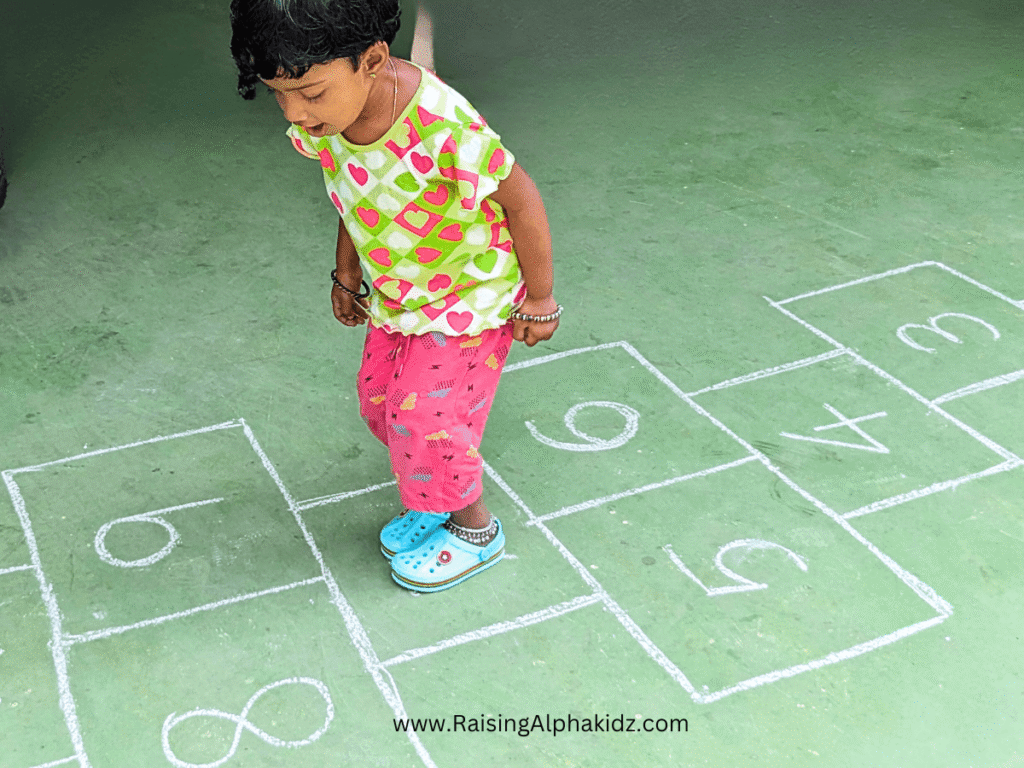
Related: How To Play Hopscotch Number Game
How to play: Call out cues like “Hop to number 4!” or “Find the number before 6!”
Learning Outcomes: Number recognition, early math.
2. Circle In and Out Hop Challenge
To play this Circle inside and Outside game, draw circle on the flour with chalk or crayon in a sidewalk or floor.
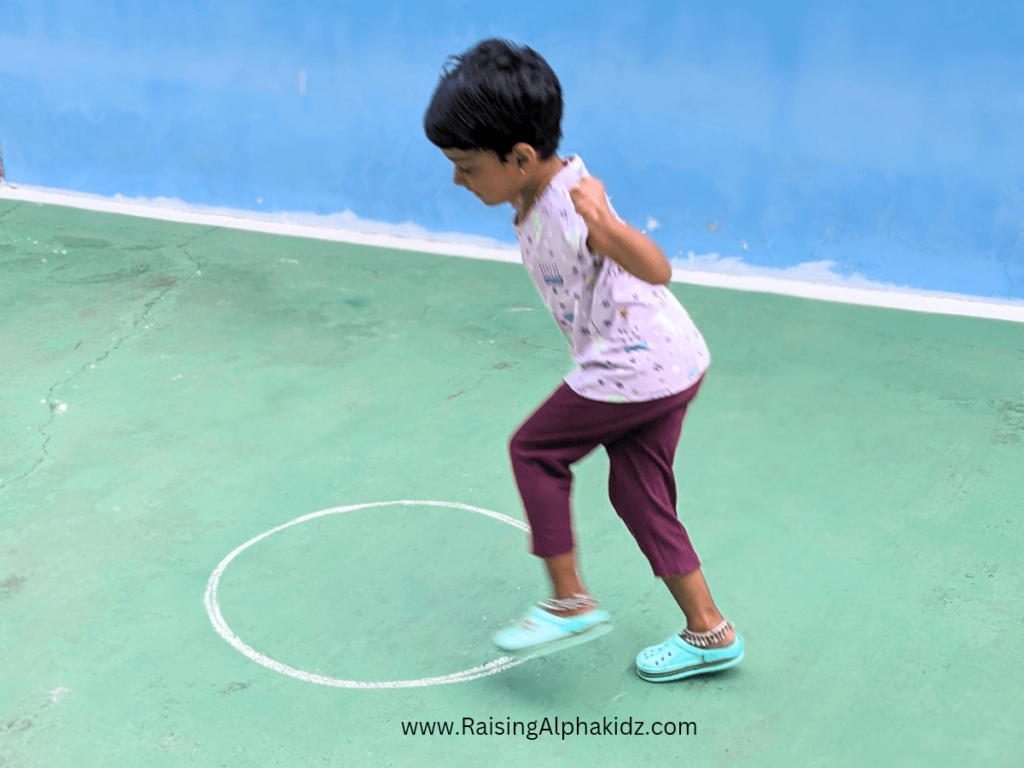
How to play: Say “In” and “Out” so that your kid can jump inside and outside the drawn circle.
Learning Outcomes: Active listening
3. The Floor is Lava
Draw a patches/spots on floor or sidewalk using crayon or chalk as shown in image.
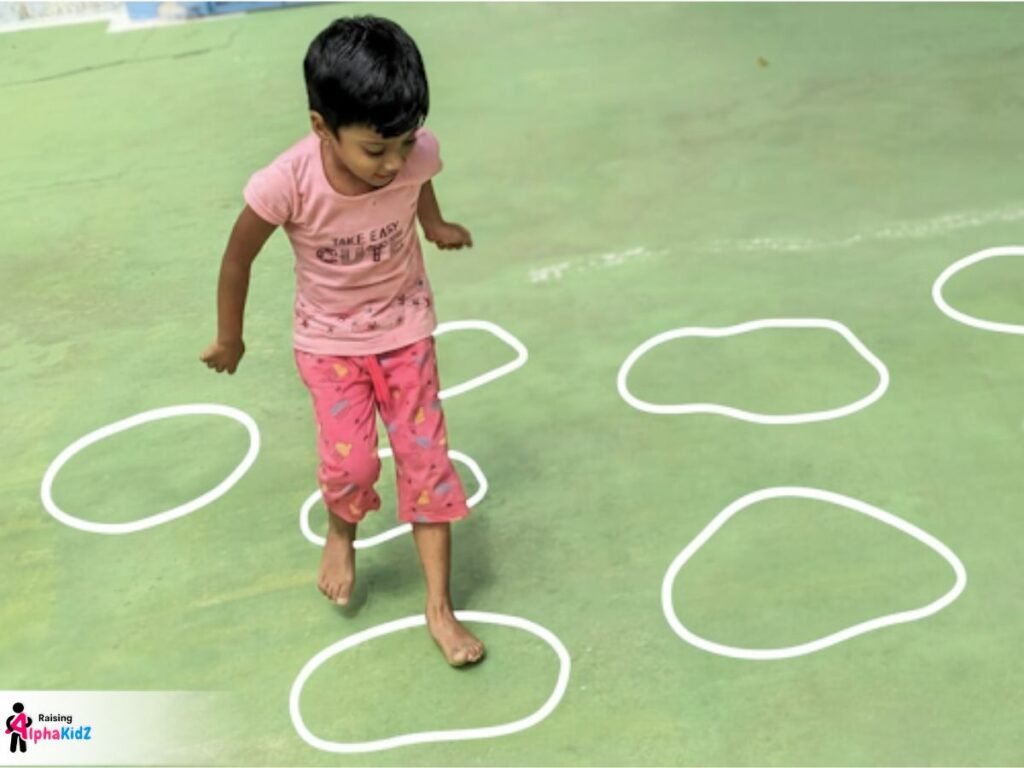
How to Play: Tell your child, “The floor is lava!” and they must quickly step or jump onto the drawn spots without touching the floor outside the patches.
Learning Outcomes: Enhances quick decision-making, balance, and agility.
4. Shape Hop Commands
Draw basic shapes like circles, squares, and triangles on the ground.

How to play: Call out actions like “Hop on the triangle!” or “Jump off the square!”
Learning Outcomes: Shape recognition + following directions
5. Action Jumping
Make a list of fun actions (like frog, kangaroo, rocket, penguin etc). Parents can also prepare small picture cards of these actions for extra excitement.
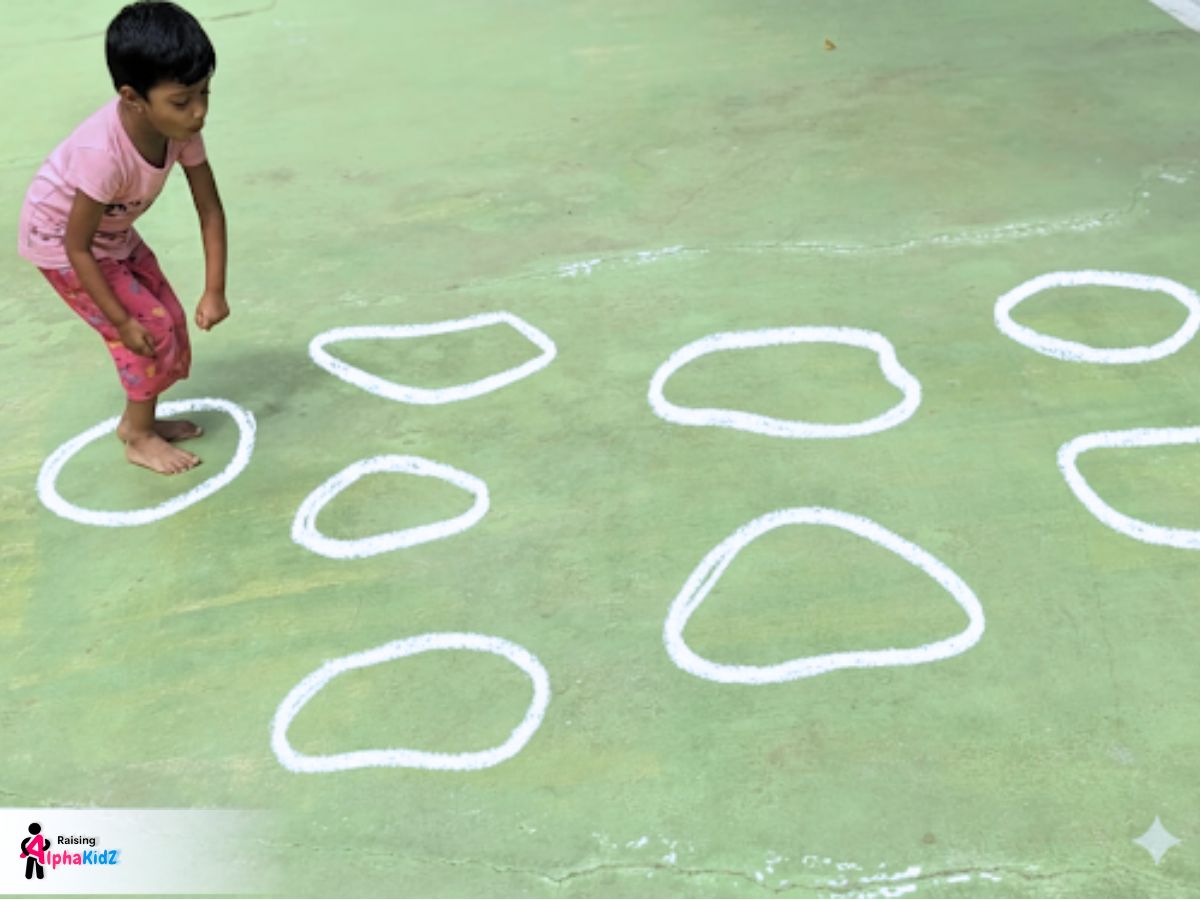
How to Play: Call out or show an action, and your child has to jump like that character—for example, “Jump like a frog!” (low squats and hops), “Jump like a rocket!” (straight up with arms high), or “Jump like a kangaroo!” (big forward hops). Parents can join in or take turns calling the actions.
Learning Outcomes: Sparks creativity and imagination while improving gross motor skills, body awareness, and listening skills.
6. Animal Jumps
Draw shapes on your flour and use it with animal names.
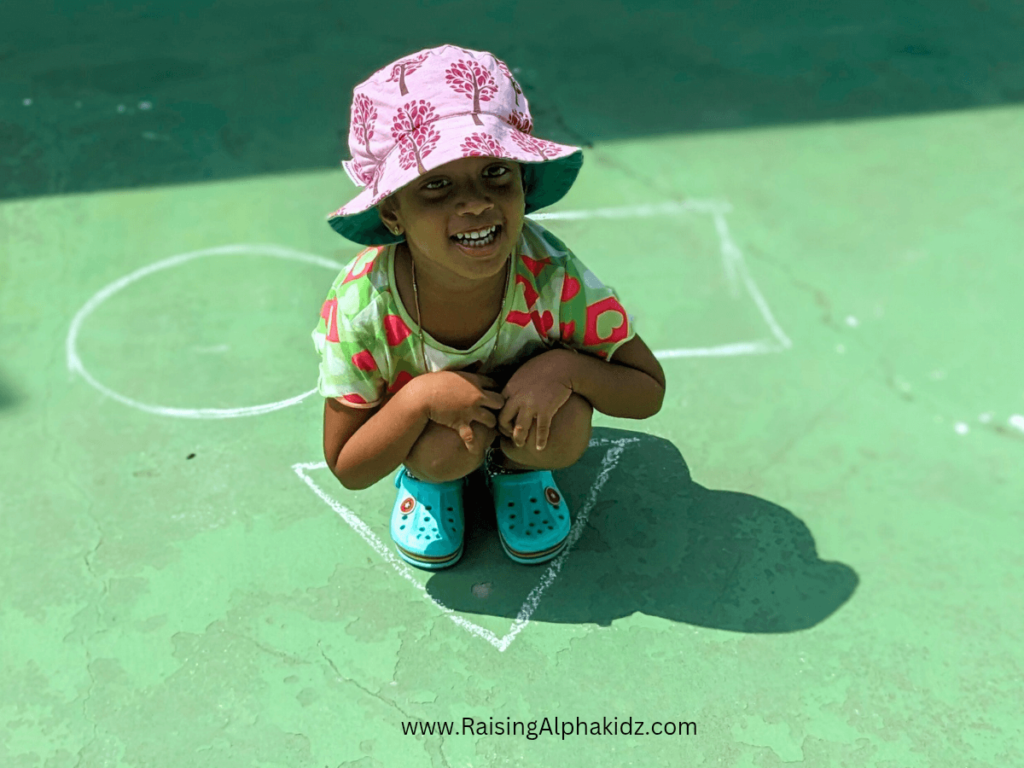
How to play: “Hop like a frog to the circle!” or “Waddle to the penguin!”
Learning Outcomes: Animal names, movement coordination
7. Freeze Dance Jump
Let kids hop freely while music plays.
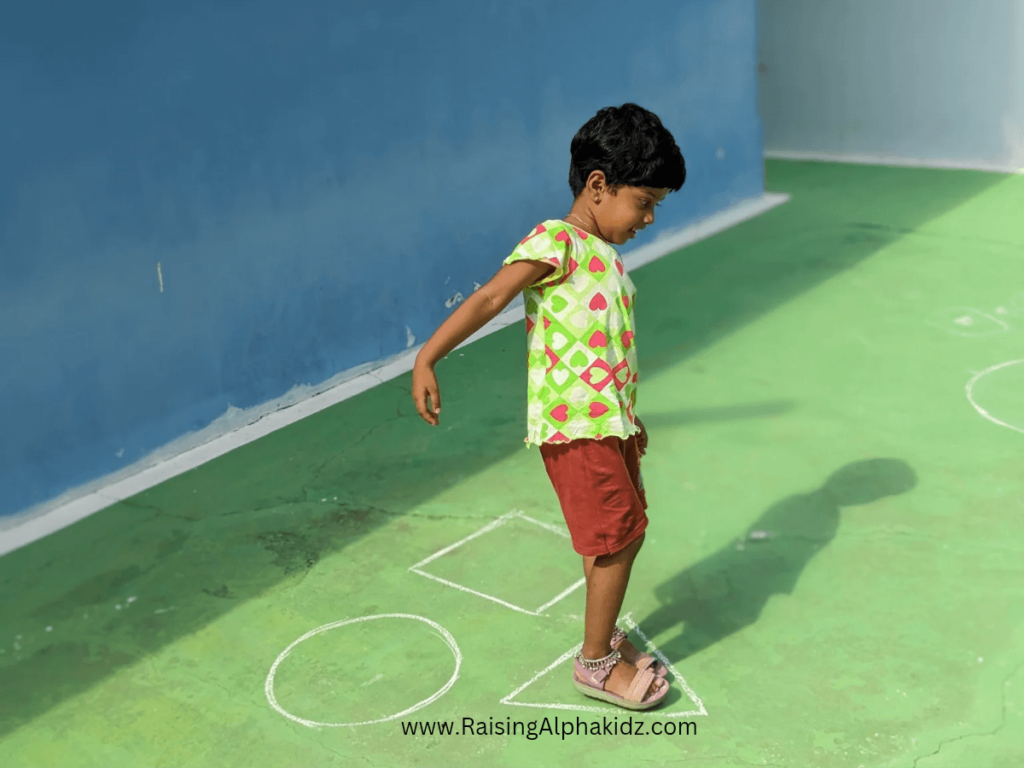
How to play: When the music stops, shout “Freeze in a triangle!” or “Freeze outside the square!”
Learning Outcomes: Self-regulation, listening
8. Yes or No Jump
Pose a question like “Is banana is blue in color?”
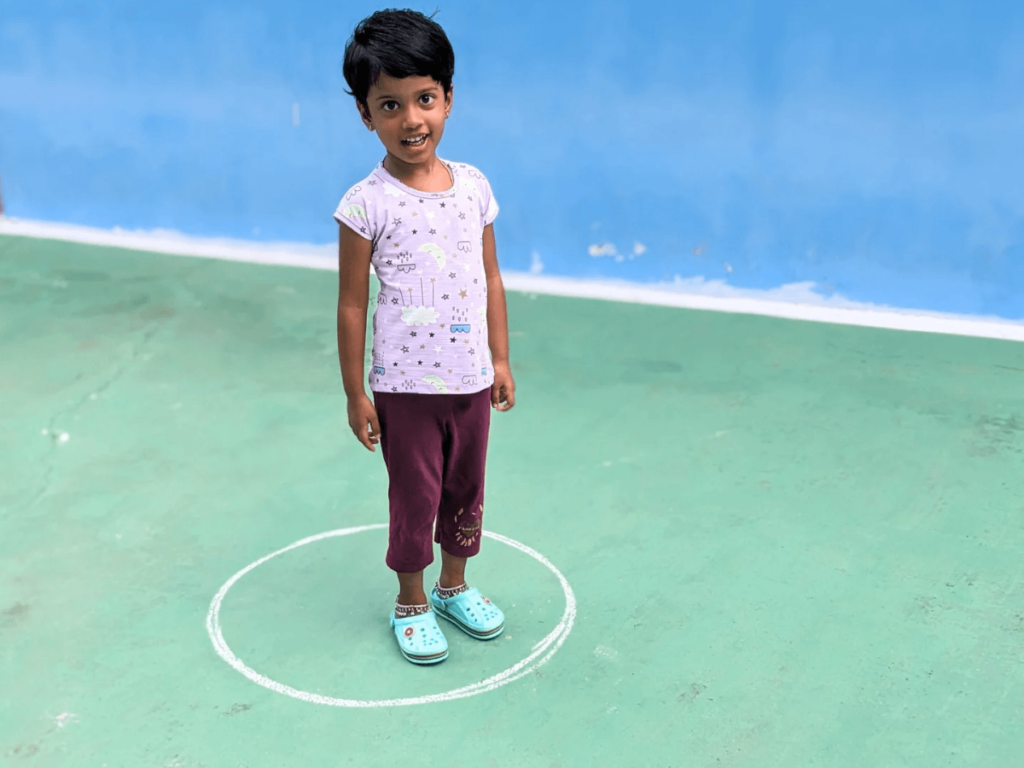
How to play: “Yes” = Jump in the circle, “No” = Jump out.
Learning Outcome: Critical thinking, general knowledge
9. Alphabet /Number Jump
Write out Numbers or Alphabets in a circle.
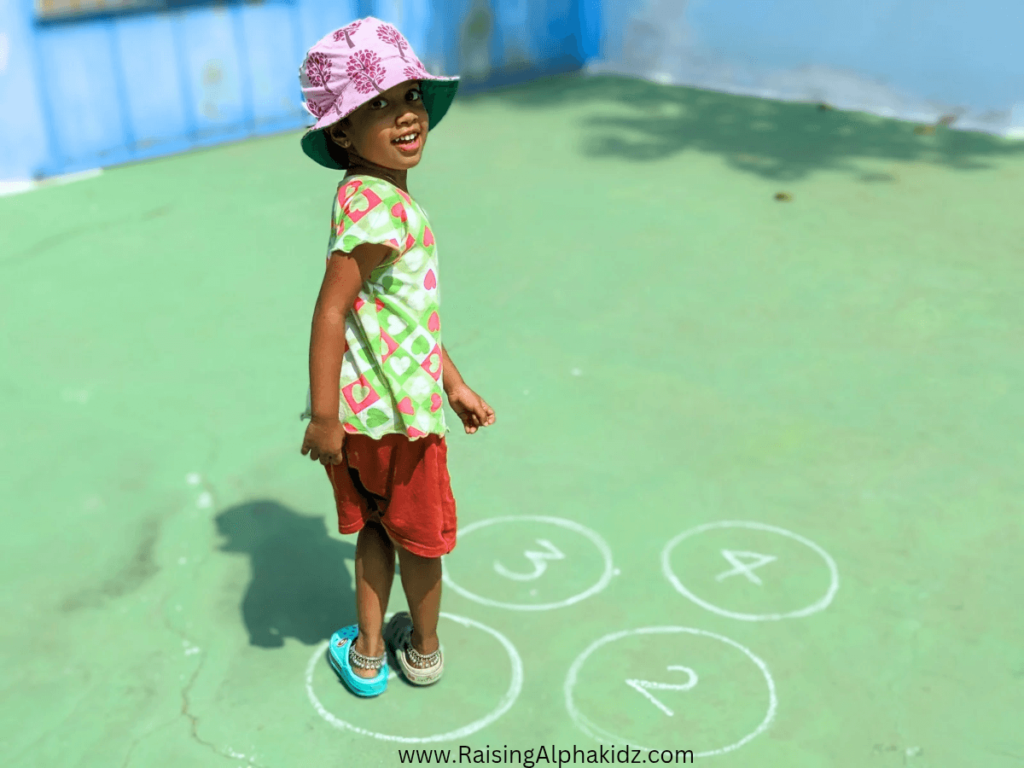
How to play: Say the number or Alphabet loud, and kids hop to the letter or number.
Learning Outcomes: Letter and number recognition.
10. Opposite Hop
Draw circle on the floor with chalk.
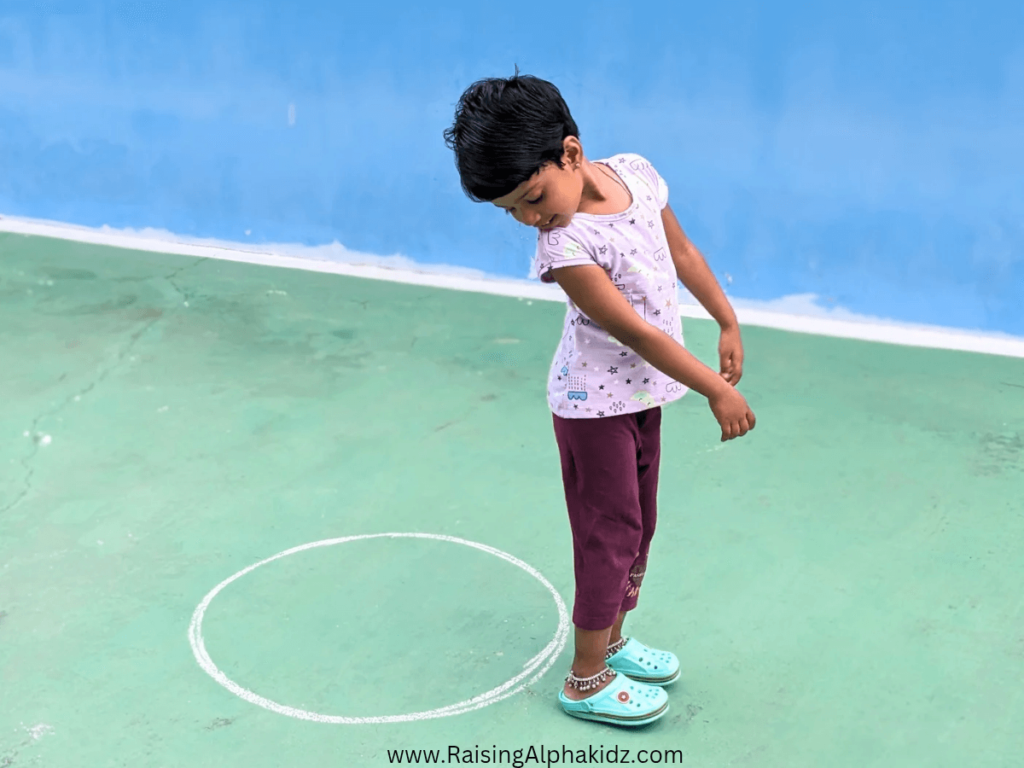
How to play: Say “In”, and kids must hop on its opposite, ie Outside the circle. If you say “Out”, kids must hop inside the circle.
Learning Outcomes: Attention building.
You Might Also Like: Opposites For kids ebook
11. Direction Hop
Use commands like “Hop left!” or “Go backward two steps!”
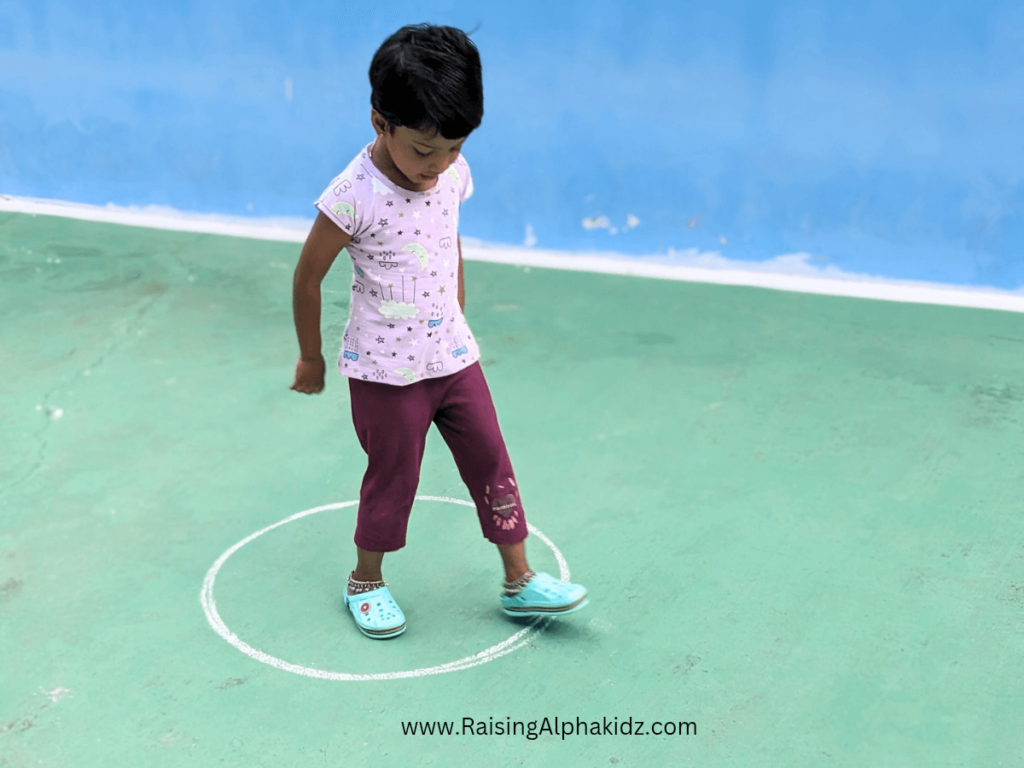
Learning focus: Spatial awareness, direction following
12. Story Hop
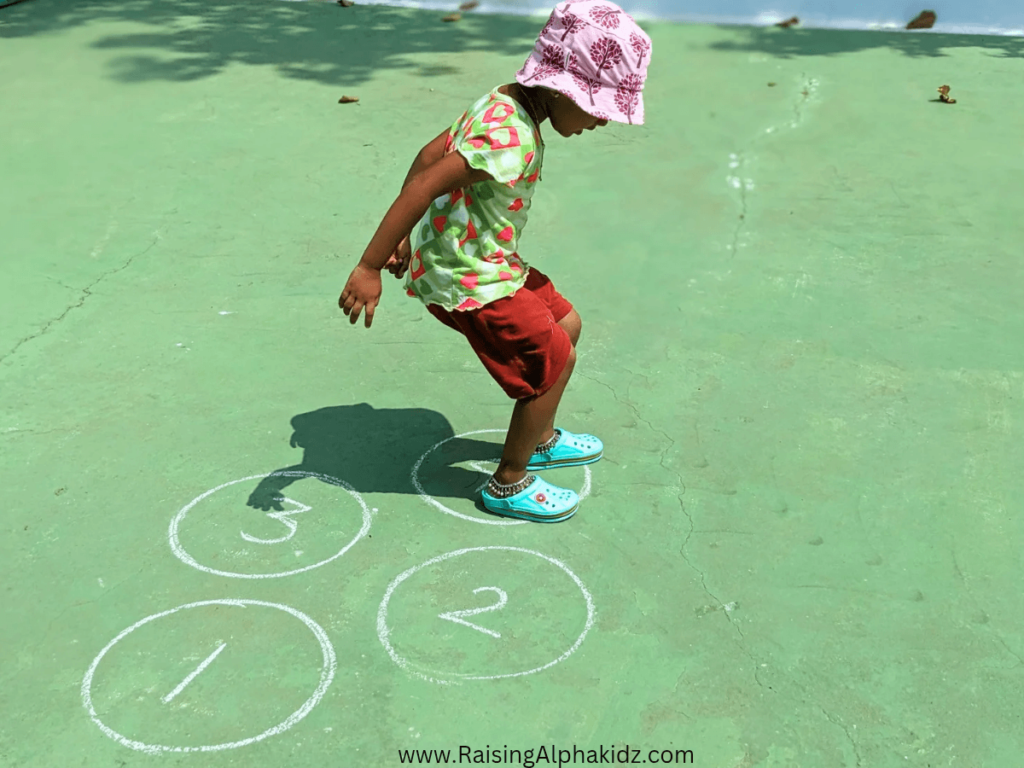
Tell a mini story with numbers like “There was duck, which laid Four eggs, three eggs are in white color and One in Gray color”
How to play: Every time you say a number in between, kids must hop into the number inside of a circle. This no-equipment jumping game helps to learn numbers.
Learning Outcomes: Memory, attention, listening
You Might Also Like: Moral stories for kids
13. Jumping Up/Down from Surfaces
Place a safe, sturdy surface like a low step, cushion stack, or platform (not too high) in an open area. Make sure it doesn’t wobble.
How to Play: Ask your child to carefully jump up onto the surface and then back down to the floor. Parents can add variations—like clapping before landing, jumping down on one foot, or timing how many safe jumps they can do in a row.
Learning Outcomes: Develops leg strength, balance, and coordination while boosting confidence in controlled risk-taking.
14. Leapfrog
Clear an open space indoors or outdoors. Parents should kneel or bend down safely to form the “frog.”
How to Play: Ask your child to jump forward over the “frog’s back” by placing their hands gently on it and leaping over. After each jump, parents and kids can swap roles (parent crouches, child jumps, then vice versa if safe). For solo play, set up cushions or low obstacles to leap over like frogs.
Learning Outcomes: Enhances leg power, balance, and coordination while encouraging teamwork, turn-taking, and lots of giggles.
15. Jumping Jack Challenge
Clear a safe space indoors or outdoors where your child has enough room to jump freely.
How to Play: Ask your child to do jumping jacks along with you. Start with a small number (like 5) and gradually increase the count (10, 15, 20…). Parents can set a timer and see how many jumping jacks the child can complete in a minute, or make it fun by adding music to jump along.
Learning Outcomes: Builds stamina, strengthens muscles, boosts coordination, and introduces the idea of exercise as a fun, daily habit.
16. Balancing Beam
Stick a long strip of masking tape on the floor. Make sure the area is safe and free from obstacles.
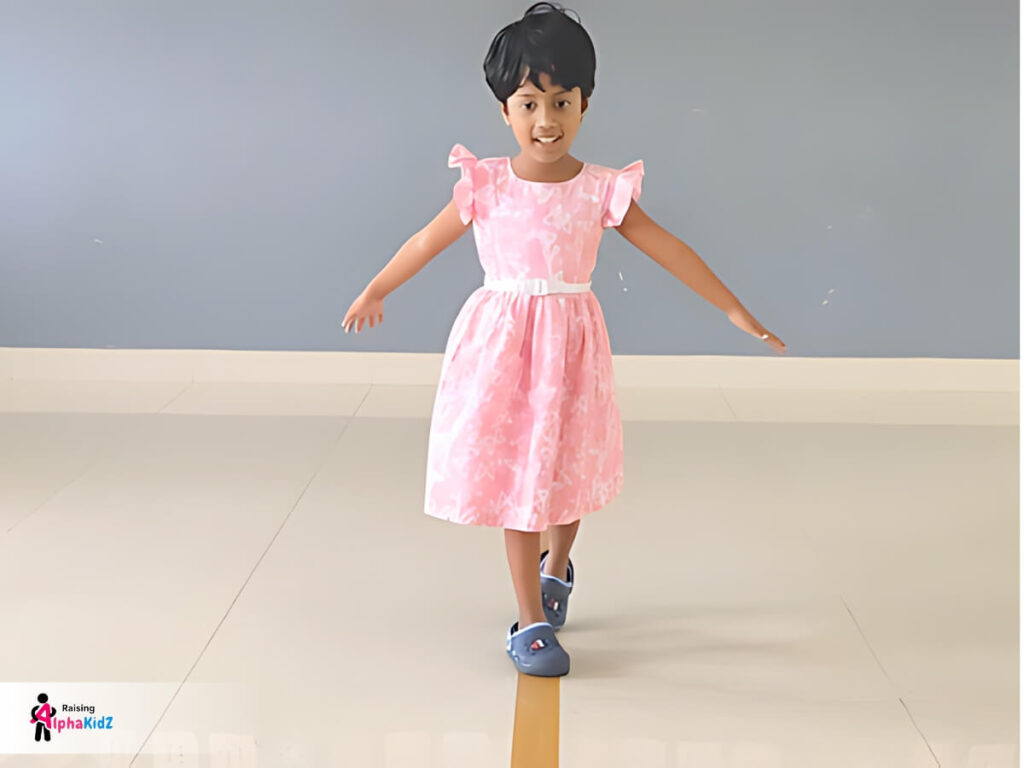
How to Play: Ask your child to walk carefully from one end of the beam to the other without stepping off. For added challenge, let them try hopping, tiptoeing, or walking backward. You can place small objects along the beam for them to pick up while balancing.
Learning Outcomes: Improves balance and coordination and builds focus and concentration
17. Other Easy No-equipment Jumping Games
- Free Jump – Jump freely in place or around, no rules.
- Knees Up Jumping – Jump bringing knees toward the chest.
- Kangaroo Jumps – Big forward hops, pretending to be a kangaroo.
- Tuck Jumps – Jump and pull knees close to chest mid-air.
- Dodge Ball – Jump and move to avoid soft balls thrown by others.
- Musical Jump – Like musical chairs, but kids jump until music stops.
The above games also serves as the simple no-equipment jumping games which you can play with your kid either indoor or outdoor to boost physical activity.
Bonus: List of Jumping Games For PE (Using Rope & Hula Hoops)
1. Jumping Rope
Give your child a jump rope suitable for their height (lightweight for younger kids).
How to Play: Hold one end of the rope while the child holds the other, or the child can swing the rope themselves. Swing the rope overhead and under the feet, encouraging the child to jump each time it passes. Start slow and increase speed or count the jumps for a fun challenge.
Learning Outcomes: Builds stamina, balance, rhythm, and gross motor coordination while boosting self-confidence and focus.
2. Jump the River
Lay two ropes parallel on the ground in a straight line.
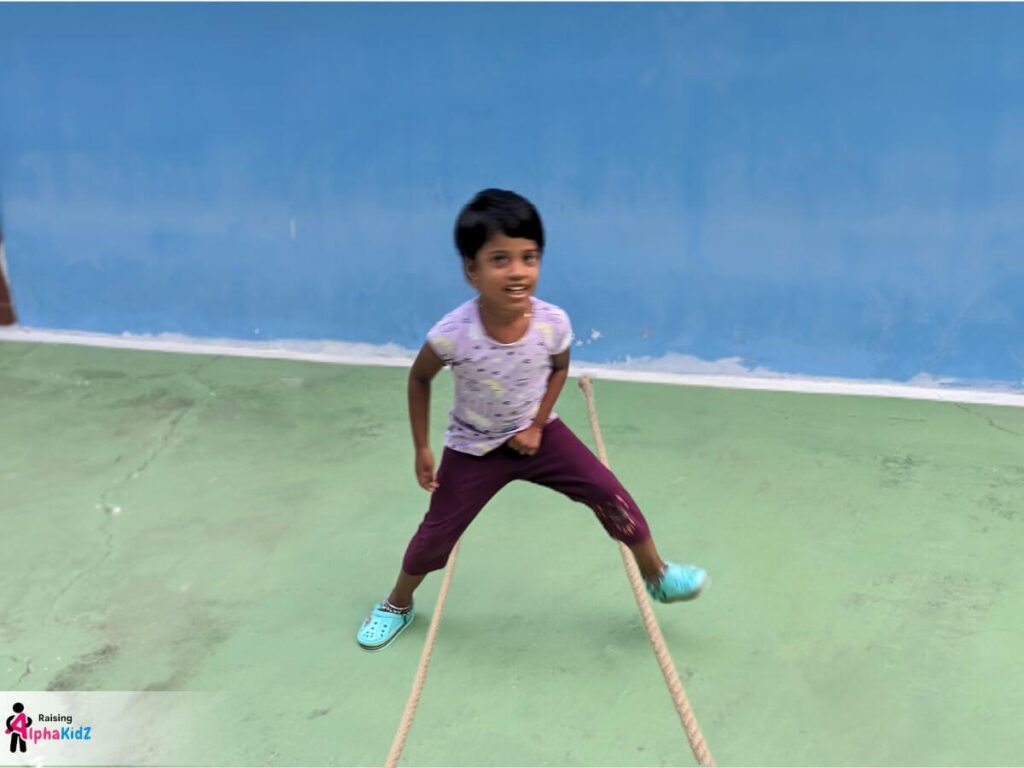
How to Play: Tell your child the rope is a river they must jump across. After each successful jump, widen the rope slightly to make the river “grow.” Continue until your child can no longer cross, and cheer them on each attempt.
Learning Outcomes: Strengthens leg muscles, improves distance judgment, and develops courage and perseverance through active play.
3. Hula Hoop Jumps
Place one or more hula hoops flat on the floor, spaced apart. For parent-child play, stand next to your child for guidance and encouragement.
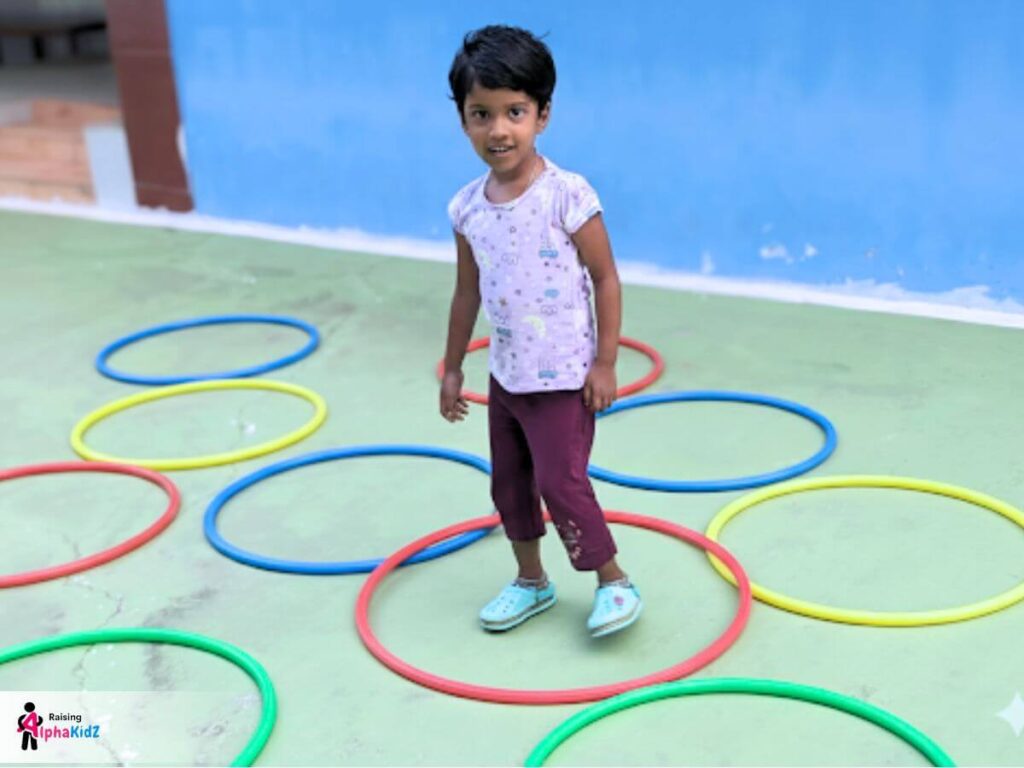
How to Play: Ask your child to jump in and out of the hoops with both feet together, or hop from one hoop to another. You can turn it into a fun challenge by timing jumps or creating patterns to follow.
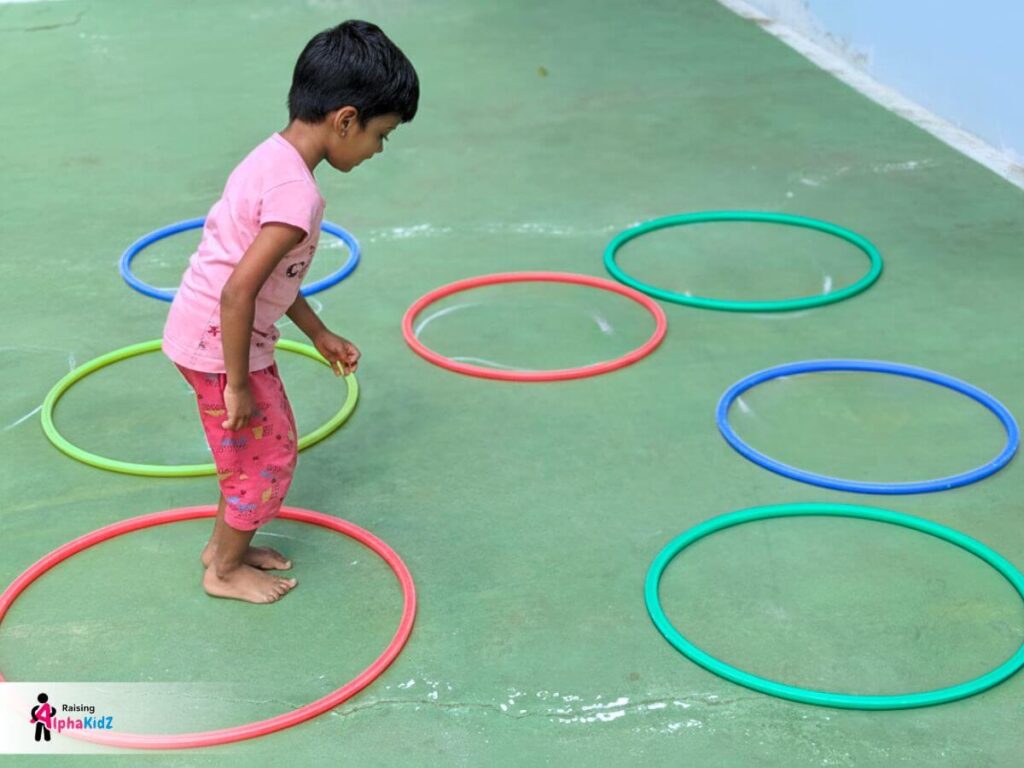
For solo play, your child can jump through a sequence of hoops or practice different jumping styles like two-footed jumps, side jumps, or even hopping on one foot.
Learning Outcomes: Strengthens leg muscles, improves coordination, balance, and spatial awareness, and builds confidence in jumping skills while keeping the fun going.
4. Jumping Over Laser Beams
Use string, yarn, or crepe paper strips to create “laser beams” by taping them across a hallway or between two chairs at different heights.
How to Play: Ask your child to carefully jump over or crawl under the “laser beams” without touching them. Parents can make it fun by timing the run, adding sound effects, or raising/lowering the beams after each round.
Learning Outcomes: Improves gross motor skills, agility, spatial awareness, and concentration while sparking imaginative adventure play.
5. Reach the Branch
Find a safe low-hanging branch outdoors or use a sturdy horizontal bar indoors. Ensure the area below is soft (grass, mats, or cushions) to prevent injuries.
How to Play: Ask your child to stretch and jump to touch or grab the branch. For added fun, parents can hold a soft toy at branch height for the child to reach. Adjust the height based on your child’s ability. For solo play, your child can try reaching different “branches” at varying heights or practice jumping from different positions.
Learning Outcomes: Develops upper body strength, hand-eye coordination, and core stability while encouraging confidence, goal-setting, and active outdoor play.
Importance of Physical Activity
PE (Physical Education) games are not just about fun—they help develop gross motor skills, balance, coordination, endurance, and social skills. These games teach children the joy of movement, encourage independence, and build confidence in their physical abilities.
- Builds strong bones and muscles
- Improves flexibility and coordination
- Keeps the heart healthy
- Boosts energy and stamina
- Maintains a healthy weight
- Improves focus and memory
- Reduces stress and anxiety
- Encourages teamwork and social skills
- Develops confidence and resilience
- Promotes overall physical and mental well-being
FAQ
Children can enjoy skipping rope, hopscotch, or bouncing a ball against a wall by themselves.
Popular outdoor games include tag, hide-and-seek, hopscotch, relay races, kickball, and scavenger hunts. They encourage movement, teamwork, and lots of fun.
Trampoline games, hopscotch, skipping rope, and hurdle jumps are best for practicing jumps.
Activities like jump rope, trampoline bouncing, tuck jumps, hurdle races, and musical jumps strengthen leg muscles.
Sports like basketball, volleyball, long jump, dodgeball, and hopscotch require jumping skills.
There are many types such as free jumps, obstacle jumps, rope jumps, trampoline games, and sport-based jumps. Each type trains different muscles and movements.
Similar Activities You’ll Love
If your child enjoys these hop and jump games, they might also love:
- Obstacle Course Games for Kids
- Simon Says Movement Game
- Animal Yoga Poses for Preschoolers
All these activities blend fun with learning—keeping kids active, engaged, and always curious!
Ready, Set, Hop!
Jumping games are more than just energy-busters—they’re an awesome mix of active play and early learning. Whether you’re playing indoors on a rainy day or outside in the sun, these games offer endless opportunities for fun, connection, and growth.
So grab some chalk, and voice out—and get ready to play no-equipment jumping games !
More Outdoor Activities To Play

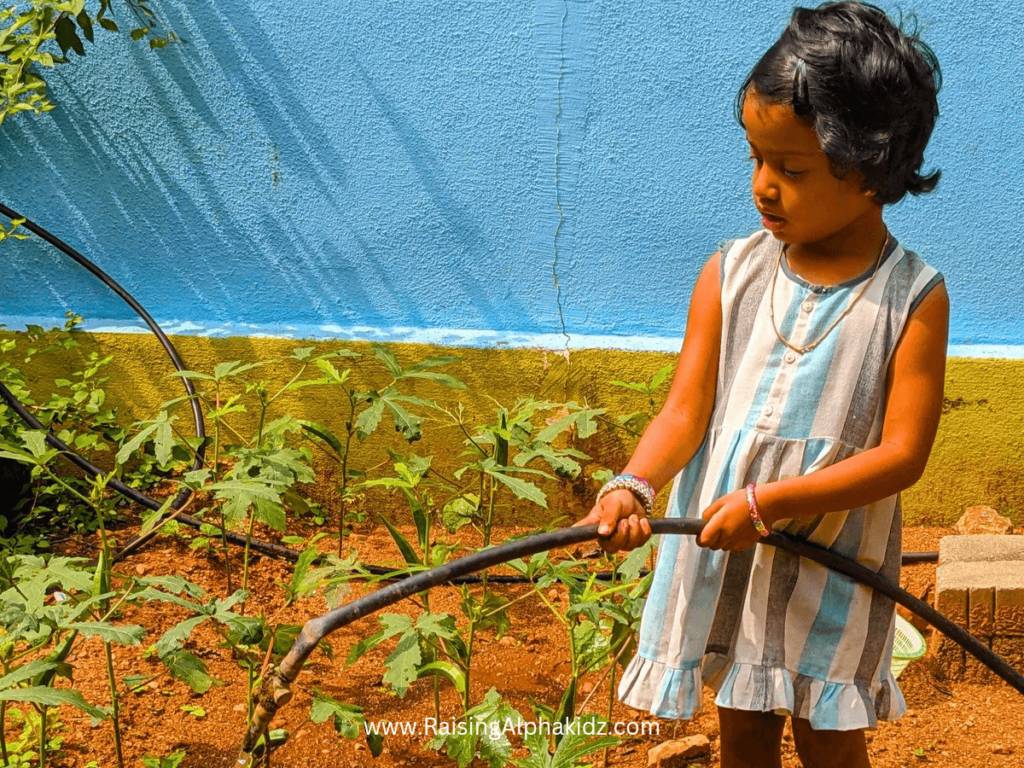
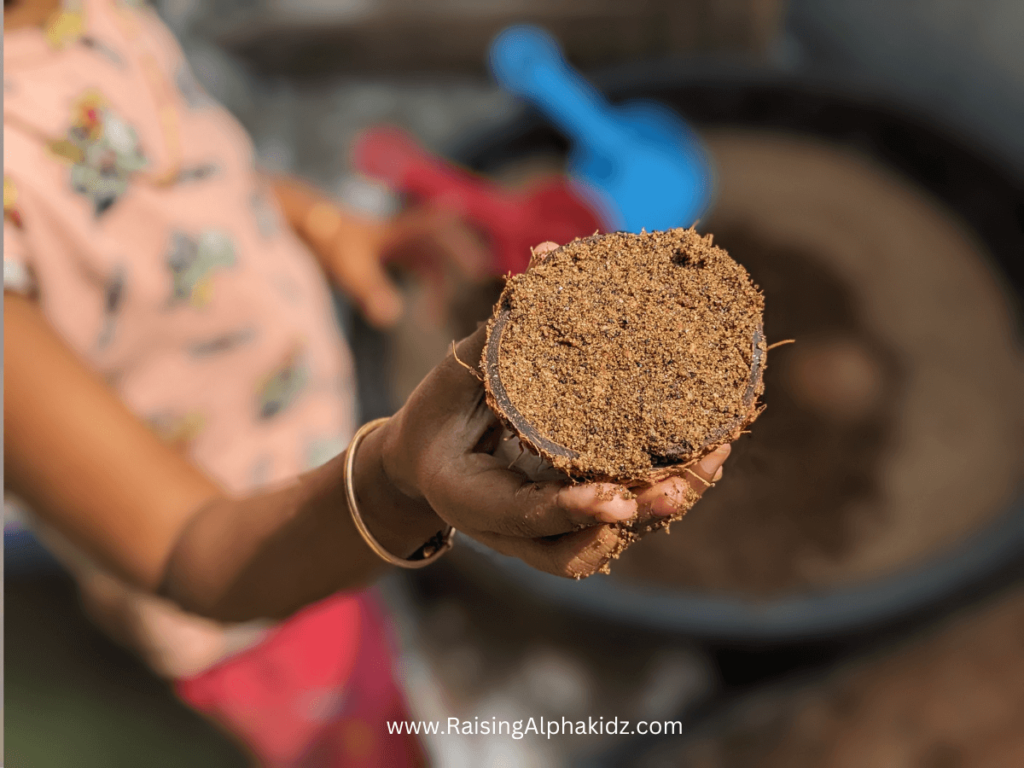
Checkout: Outdoor Activities Archive
Subscribe To Newsletter

